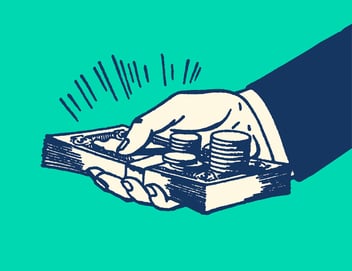What are the Biggest Reasons Why Customers Abandon Brands?
People fall in love with brands for many reasons.
They're drawn to become loyal through value, performance, branding and their own personal ROI.
Great customer service will also draw in a few people.
But, in sick twist of fate, poor customer service is the overwhelming reason why people abandon brands.
- 47% of customers would take their business to a competitor within a day of experiencing poor customer service (Forbes)
- 52% of consumers have switched providers in the past year due to poor customer service (Accenture)
- Once a customer experiences what they consider a major customer experience failure, 64% will stop recommending the organization, start looking for an alternative brand or actively disparage the company via word of mouth, social media or other online channels (SDL)
- 70% of customers cite poor customer service as a reason for not buying from a brand (McKinsey)
- 78% of consumers have bailed on a transaction because of a poor service experience (American Express)
(There are many, many more stats around this field, all found over at our collection of loyalty statistics.)
Customer Service as Cost Center? That's Funny.
Customer service has long fought its reputation as a "cost center" to executives who only see profit centers as those that generate new business.
According to Accenture, over $1.6 billion is lost every year due to poor service. We're guessing that's an understatement. The same report says that most of those customers won't come back.
If customer retention is important to you, then you must invest in great service. But that doesn't just mean having people on the phone and answering emails or web chats.
It's an organizational philosophy of customer centricity. It requires top-down commitment, a solid product, ongoing engagement, and ensuring the best possible experience.
In other words, minimizing the need for people to ever reach out to customer service by anticipating issues before they arrive and being responsive to feedback.
Issues will always come up, but don't look at it as a costly interaction. Look at it as an opportunity to solidify a customer (and their dollars) for years to come.
- 89% of consumers agree that good service makes them feel more positive about the brands they engage with (Verint)
- 69% of Millennials say they feel good about themselves and the company they are doing business with when they resolve a problem without talking to customer service (Aspect Software)
- 76% of American shoppers view customer service as a "true test" of how much a brand values them ( Aspect Software)
- Only 15% of consumers don't think good service would change their behavior in any way (Verint)
Why Else do Customers Leave?
Customer service is the biggie, but loyalty is the responsibility of every aspect of a business. Consider some of these other factors that turn customers away:
- Product changes - 66% of consumers cite features, design and quality of product or service as the leading factor that determined brand loyalty (Support.com)
- Price increases - 73% of consumers cite price and value as the leading factor that determined brand loyalty (Support.com)
- A good deal - 80% of shoppers would switch stores or brands when offered a compelling promotion (Market Track)
- Unresponsiveness - 55% of consumers said they are not likely to continue being a customer of a company that ignores their feedback (Apptentive)
- Better business - 90% of consumers would stop buying a company’s products when they learned of its irresponsible or deceptive business practices (55% have actively boycotted a company) (Cone)
- Just for the hell of it - 30% of the US changes brands often just for the sake of variety and novelty (GfK)
The bottom line is loyalty is hard to earn. If there was a science behind it, you wouldn't be here looking for ideas.
Every customer is different and this isn't Pokemon - you can't catch them all.
What you can do is create a business that sets customers up for success with your product, service, membership, whatever it is you sell them.
How Profitable is Customer Loyalty?
The rewards of loyalty hardly need to be mentioned. But here's a few final stats just to hammer it home:
- A repeat customer spends 67% more than a new one (BIA/Kelsey)
- Building loyalty with 5% more customers would lead to an increased average profit per customer of between 25% and 100% (The Loyalty Effect)
- “Fully engaged” customers (those with a strong attachment to the brand, or brand ambassadors) deliver a 23% premium over the average customer in share of wallet, profitability and revenue (Cap Gemini)
- The average repeat customer spent 67% more in months 31-36 of his or her shopping relationship than in months 0-6 (Bain)
- Customers who are fully engaged represent 23% premium in terms of share of wallet, profitability, revenue, and relationship growth (Gallup)
- A Totally Satisfied Customer contributes 2.6 times as much revenue as a Somewhat Satisfied Customer (InfoQuest)
- Engaged consumers buy 90% more frequently, spend 60% more per transaction and are five times more likely to indicate it is the only brand they would purchase in the future. All of these factors lead to engaged customers delivering three times the value to the brand over the course of a year (Rosetta)
Topics: customer loyalty

Written by: Ashley Autry






.jpeg)







Share your Comment.